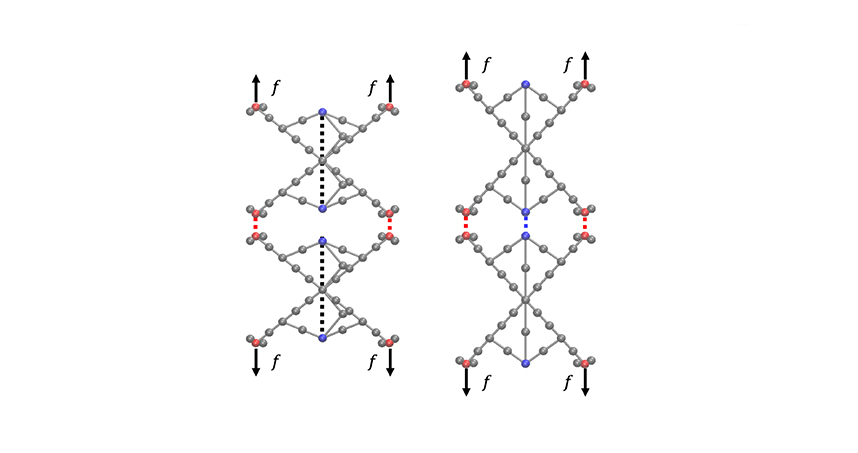Bonds Acting Like Seat Belts Could Have Wide Implications
Catch bonds that get stronger under tension could have wide-ranging effects
Common sense says that bonds break easily when pulled apart by force, and that’s true for regular chemical interactions, called “slip bonds.”
However, biological interactions called “catch bonds” are counterintuitive. These interactions involved in cell adhesion react in the exact opposite way. Just as a seat belt pulls tighter in a sudden stop, catch bonds serve as molecular-scale seat belts and get stronger under tension.
 A new study from Northwestern Engineering demonstrates a design with such shape-shifting particles using catch bonds that can easily uncouple under a small amount of pulling force, but become much more difficult to separate under a large amount of force.
A new study from Northwestern Engineering demonstrates a design with such shape-shifting particles using catch bonds that can easily uncouple under a small amount of pulling force, but become much more difficult to separate under a large amount of force.
This work could have implications in medical environments as well as in the development of protective gear, textiles, nanotherapeutics, and adhesives.
“This is important because catch bonds are thought to be utilized by our cells as well as bacteria to survive under tough mechanical environments,” said Sinan Keten, June and Donald Brewer Professor and professor of mechanical engineering and of civil and environmental engineering at the McCormick School of Engineering, who led the research. “Catch bonds are thought to play a role in various aspects of immune response, blood and urinary tract infections, clot formation, and cancer metastasis.”
The research paper “Self-strengthening Biphasic Nanoparticle Assemblies with Intrinsic Catch Bonds” was published January 4 in the journal Nature Communications.
“We reveal new examples of counterintuitive force-dependence in molecular interactions,” said Kerim Dansuk, a graduate student in Keten’s lab.
Catch bonds have been studied for decades, but the molecular mechanisms dictating this intriguing phenomenon are under debate. It’s known that the lifetime of catch bonds increases with more force, but at a certain point they behave like slip bonds. Moreover, catch bonds are challenging to replicate in synthetic chemical systems because the biological catch bonds consist of proteins, which are thought to facilitate this behavior by changing their complex shape or dynamics in response to force.
To mimic this behavior in simpler systems, researchers thought about nanoscale particles that could self-assemble at room temperature and yet switch between two shapes, depending on the level of the force. From that, researchers determined the design of shape-shifting particles was achieved by carefully designing a mechanical instability intrinsic to the particles, which operates like a force-sensitive switch that facilitates a shape change.
“The shape change occurs due to combined thermal and mechanical forces and facilitates new interactions between the particles that prolong the lifetime,” Keten said. “By tuning the stiffness of this switch, we could tune at what force level it would become activated. With this idea, we illustrated how such particles could self-assemble into nanofibers that have intrinsic catch-bonding ability.”
